
I was given this sewing machine head by a friend. It is the Kenmore model 117.959, built by the White Sewing Machine Company, and sometimes called the “football”, because of its unusual shape.
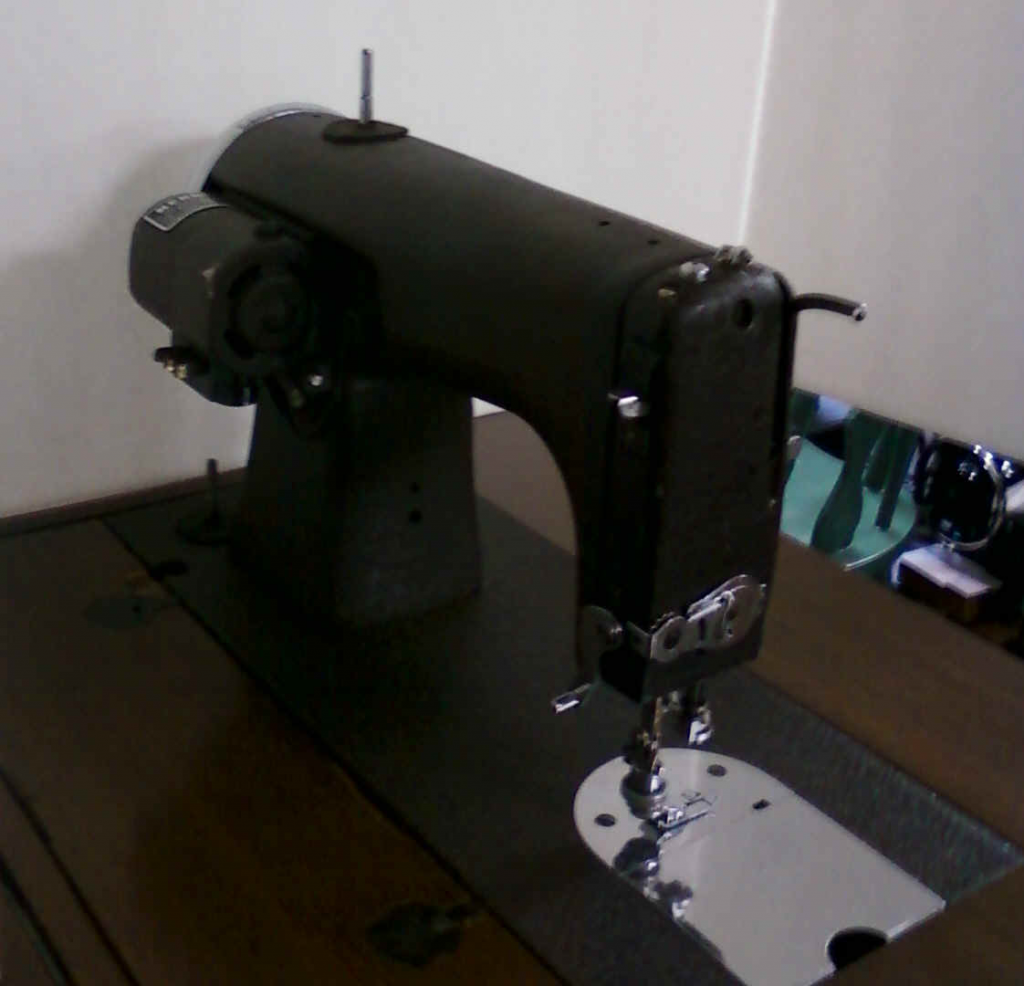
White invented the “crinkle” finish in the 1920’s. This is a 1949 White supplied model that came in brown. At first glance this machine appears to be an ugly duckling, but it doesn’t take long to win your heart with its beautiful stitches and powerful mechanics, making it a very popular sewing machine during its heyday.
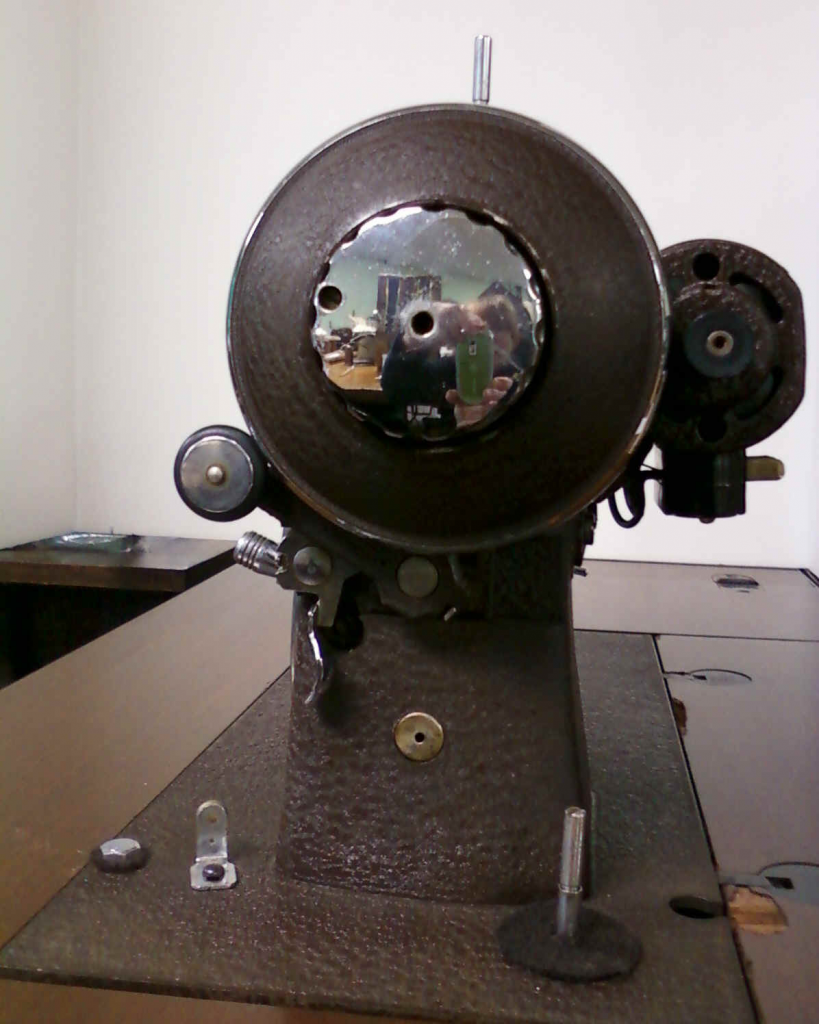
When I was given this machine head, it had a mouse nest built in the arm from being stored in a garage for many years. It took some effort to clean all the lint, hair and seeds out of the machine and the motor. It also needed a new bobbin winder tire and friction drive. The rubber wheels of the friction drives on these machines usually have flat spots from being stored for long periods of time. This can be overcome when storing your machine by propping the motor away from the hand wheel with a sponge or other cushioned object.

This machine uses the White “wishbone” rotary bobbin case, and standard 15×1 needles. If you own one of these machines, visit the Gift Shop to purchase a reproduction copy of the Kenmore 117.959 sewing machine instruction manual.
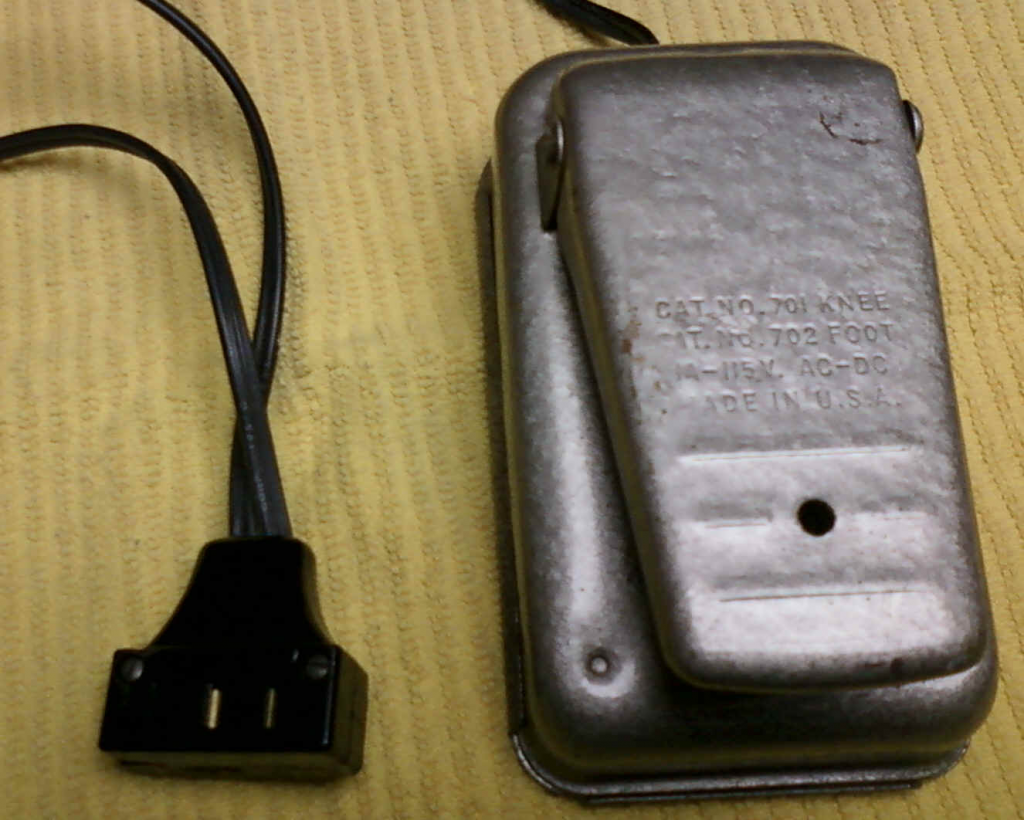
It also has the typical White 3-prong power cord/foot controller.
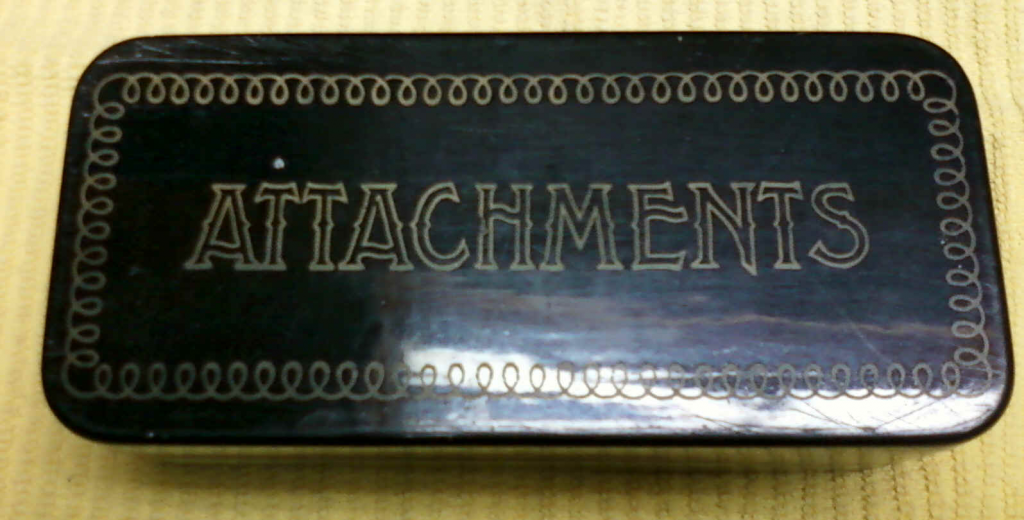
This machine uses the typical top clamping attachments that all White built machines of this era do.
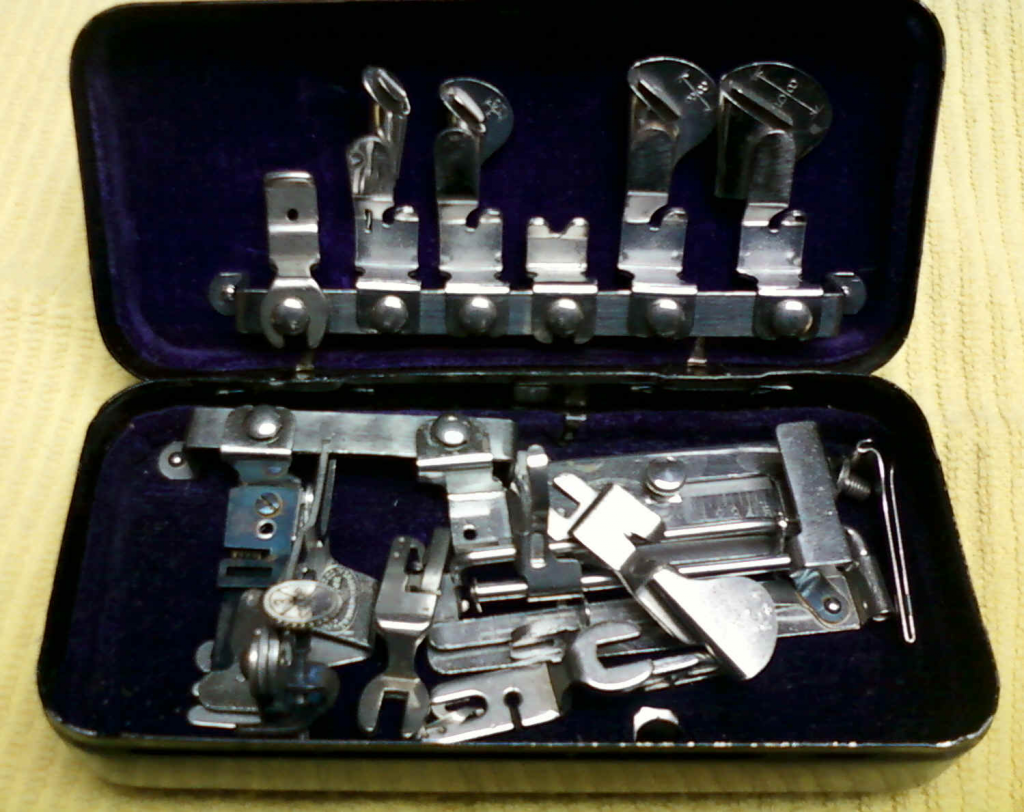
I found attachments and a buttonholer for this machine on eBay.
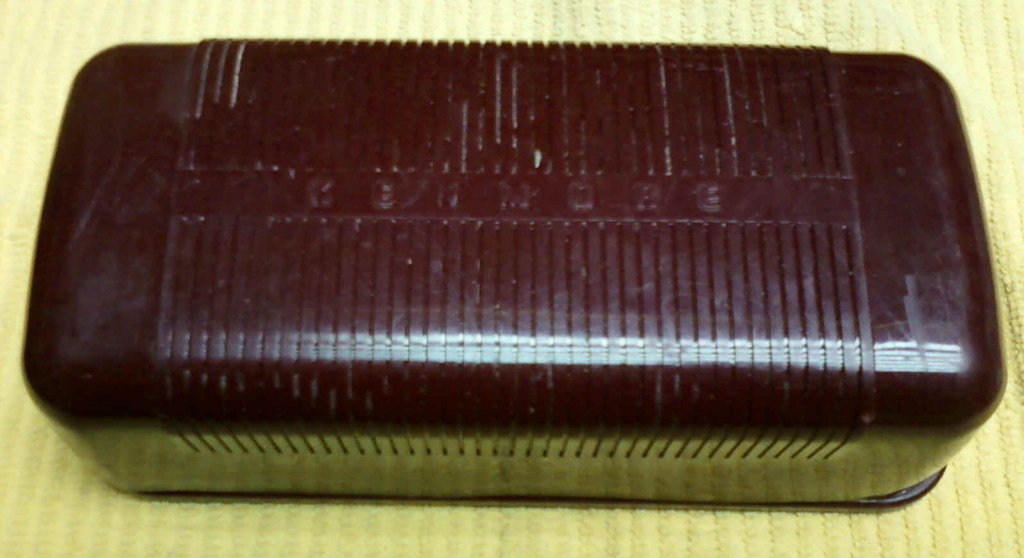
The buttonholers, when you can find them, work very well.
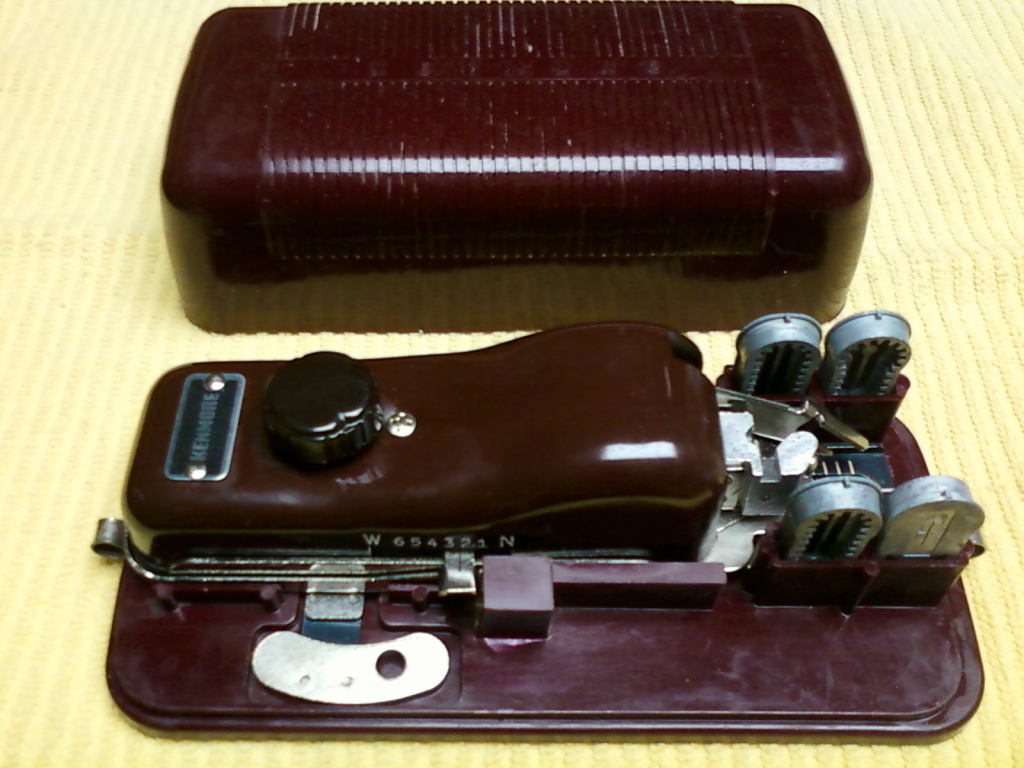
They include a feed dog cover and cams in an assortment of sizes to fit most buttons.
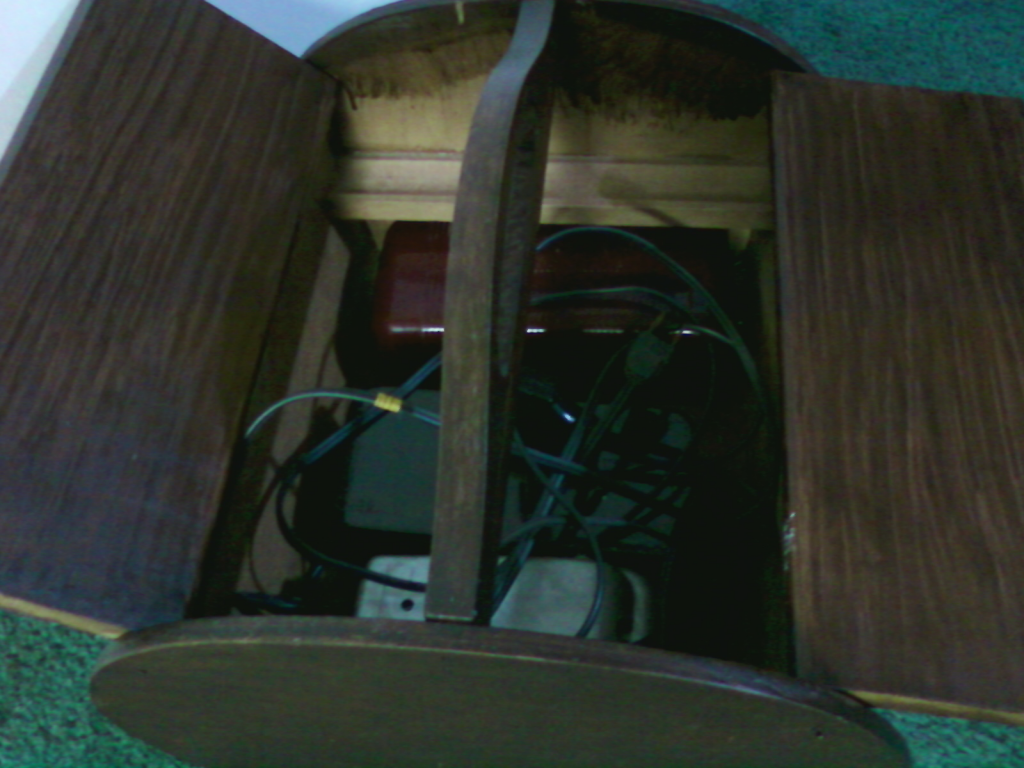
I found this sewing box at a local thrift store to use for storing the accessories.
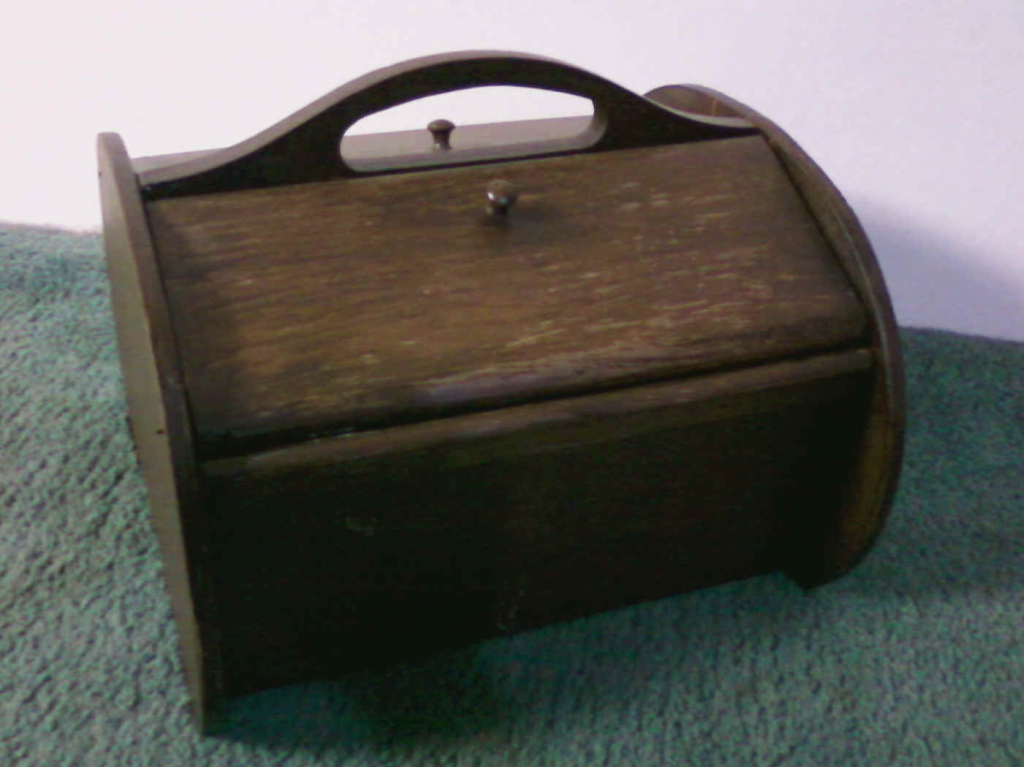
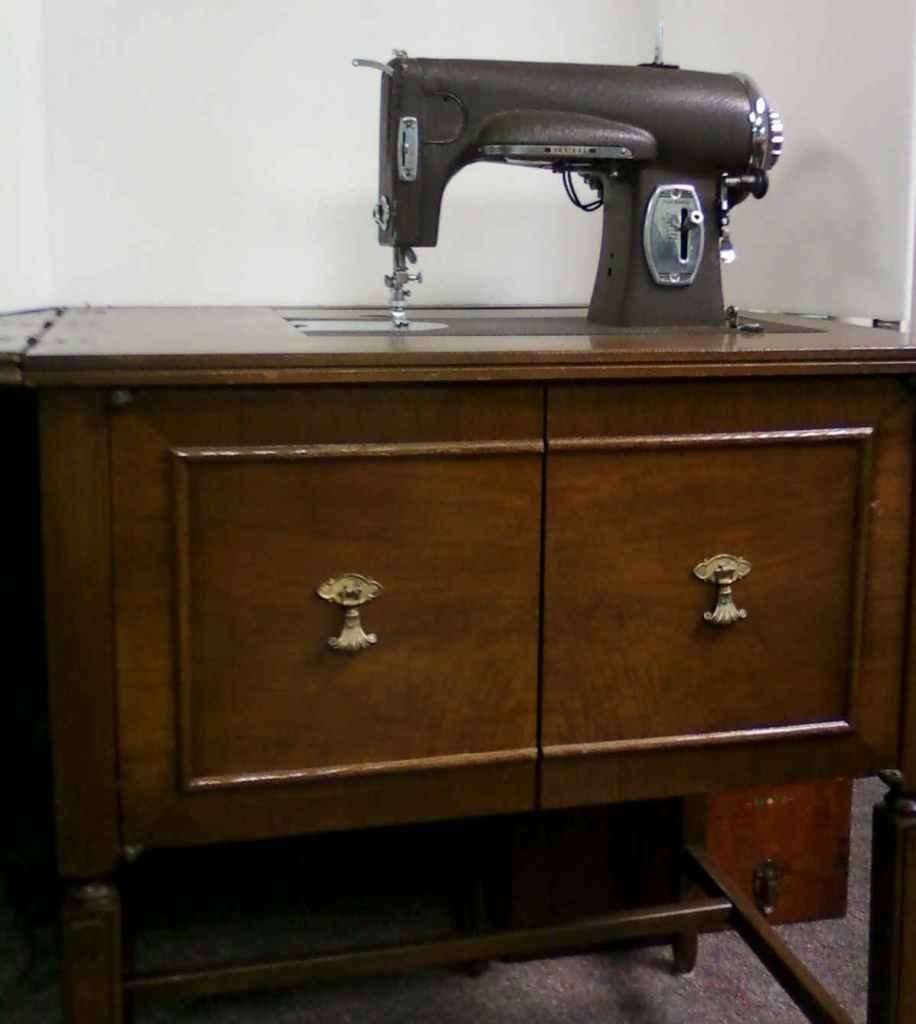
Would you believe I found this beautiful cabinet at the same local thrift store for only a dollar.
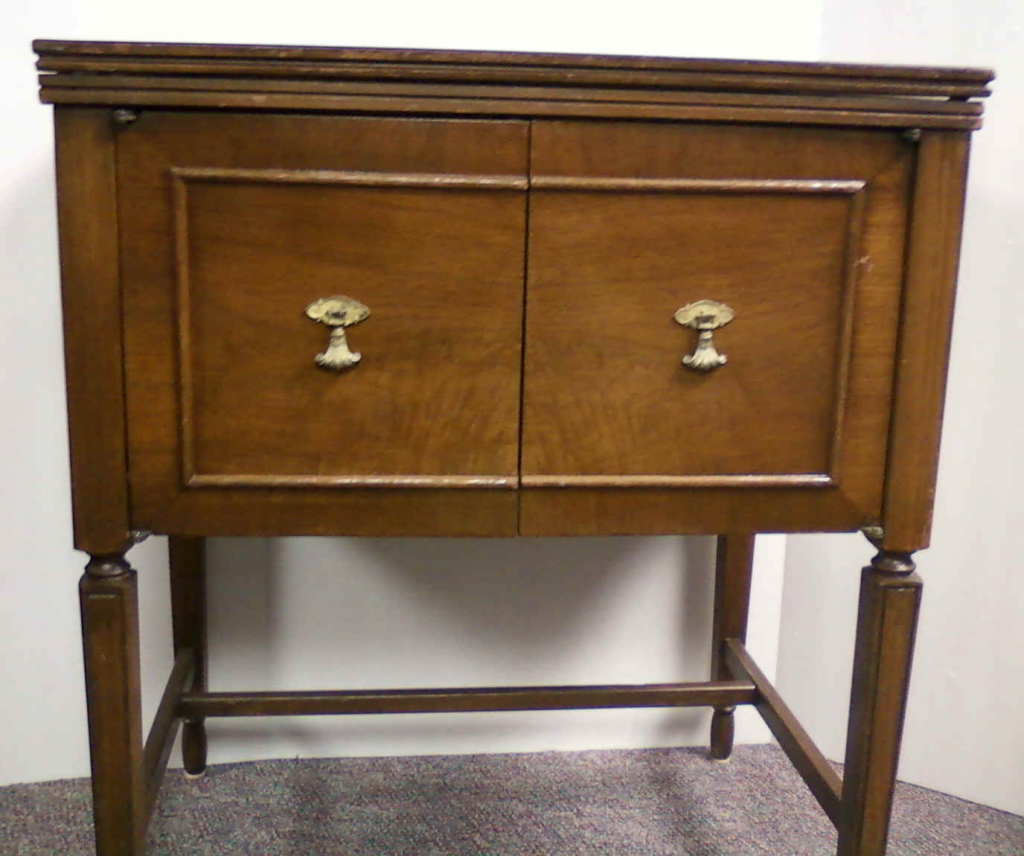
I refinished it and cleaned the door pulls. It also needed a new cable for the automatic table lift that brings the machine up when the top is opened.
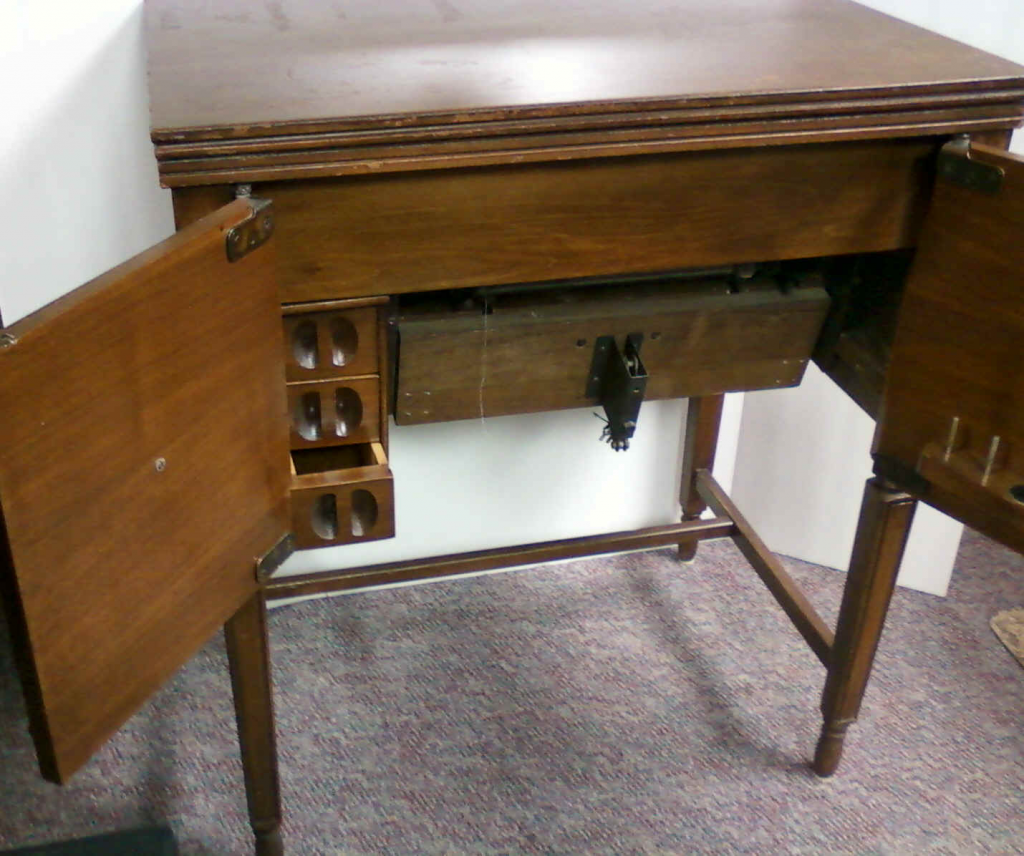
When the front doors are opened a chair can be pulled up underneath. You can see the 3 drawers on the left side and a spool holder/pincushion attached to the inside of the right side door.

Please time travel to another sewing machine era by clicking the time period button below:
1870-1879 * 1880-1889 * 1890-1899 * 1900-1909 * 1910-1919 * 1920-1929 * 1930-1939 * 1940-1949 * 1950-1959 * 1960-1969 * 1970-1979 * 1980-1989